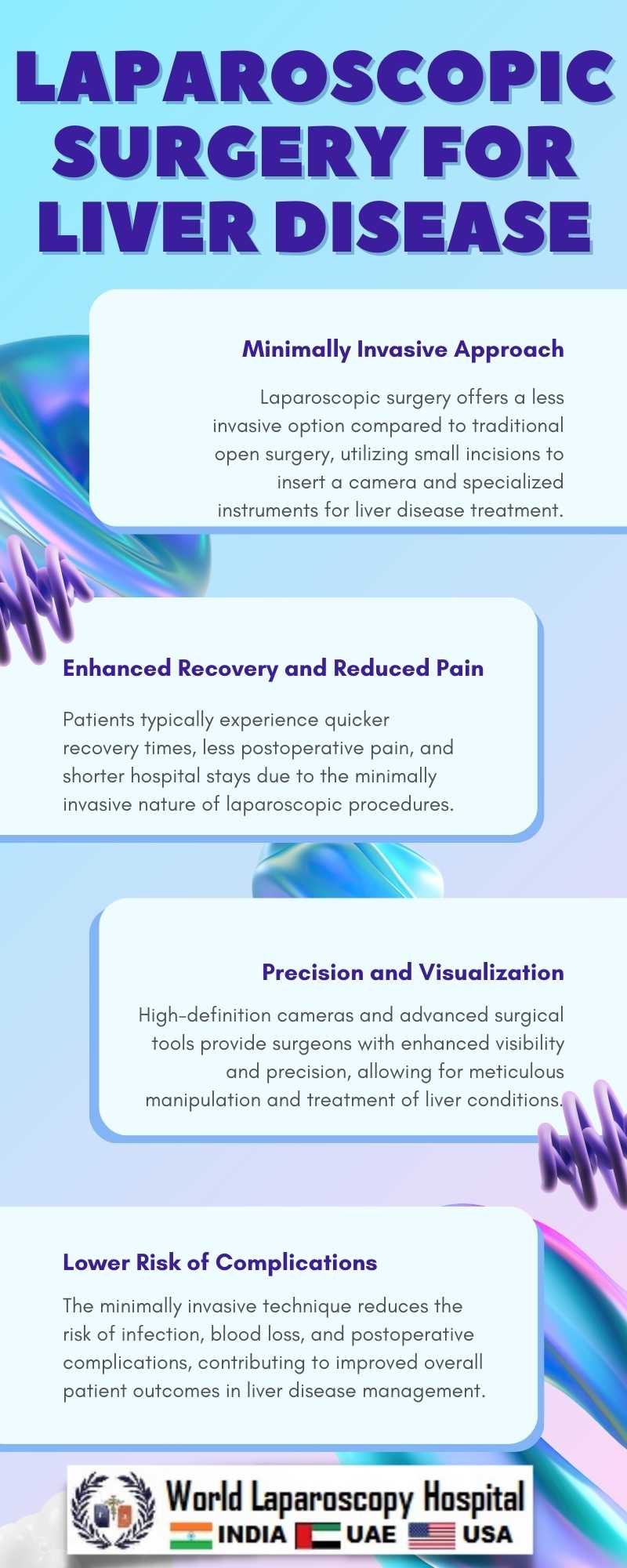
Historical Context and Evolution
The evolution of laparoscopic surgery has been marked by significant technological advancements and growing surgical expertise. Initially limited to simple diagnostic procedures and minor surgeries, the scope of laparoscopic techniques has expanded to include complex operations such as those involving the liver. This expansion was facilitated by the development of advanced instruments, better imaging technologies, and enhanced surgical training.
Indications for Laparoscopic Liver Surgery
Laparoscopic liver surgery is indicated for a variety of liver diseases, including benign and malignant tumors, liver cysts, and certain metabolic liver diseases. The suitability of a patient for laparoscopic liver surgery is determined based on the disease's nature, the liver's overall condition, and the specific anatomical considerations of the affected individual.
Advantages of Laparoscopic Liver Surgery
The benefits of laparoscopic liver surgery are manifold. Patients typically experience less postoperative pain, reduced blood loss, and smaller scars compared to traditional open surgery. These advantages contribute to shorter hospital stays and faster return to normal activities. Moreover, the minimally invasive nature of the procedure reduces the risk of infection and postoperative complications, leading to improved overall outcomes.
Technical Considerations and Challenges
Laparoscopic liver surgery demands high levels of skill and expertise from the surgical team. The liver's anatomical complexity and the necessity for precise manipulation of delicate structures require advanced training and experience. Surgeons must be adept at navigating the challenges posed by the limited field of view and the need for precise instrument control. The success of the procedure heavily relies on the surgeon's proficiency in laparoscopic techniques and their ability to adapt to the dynamic environment of minimally invasive surgery.
Patient Selection and Preoperative Assessment
Not all patients with liver disease are candidates for laparoscopic surgery. The selection process involves a thorough preoperative assessment, including imaging studies like MRI or CT scans, to evaluate the liver's disease extent and the surrounding structures. Factors such as the lesion's size and location, the presence of cirrhosis, and the patient's overall health status are critical considerations in determining eligibility for laparoscopic liver surgery.
Postoperative Care and Recovery
The postoperative care for patients undergoing laparoscopic liver surgery focuses on pain management, prevention of complications, and monitoring for liver function. The recovery process is generally quicker than with open surgery, but it still requires careful attention to the patient's nutritional needs, physical activity levels, and overall well-being.
Future Directions
The future of laparoscopic liver surgery is promising, with ongoing advancements in robotic surgery, imaging techniques, and surgical instruments expected to further enhance the safety, efficiency, and applicability of these procedures. Research and clinical trials continue to explore new indications for laparoscopic liver surgery and to refine the techniques to improve patient outcomes.
Conclusion
Laparoscopic surgery for liver disease embodies the progress and innovation in modern surgical practices. It offers a less invasive alternative to traditional open surgery, with significant benefits for patient recovery and quality of life. However, its successful implementation requires specialized training, expertise, and careful patient selection. As technology and surgical techniques continue to evolve, laparoscopic liver surgery is set to play an increasingly central role in the management of liver diseases.